Because cooking and keeping house have been constructed as women's work throughout American history, American Culinary History materials are particularly rich in representations of women and femininity (“womanhood” or even “true womanhood” to many 19th c writers on cooking and “household arts”) These images are ocassionaly realistic, often absolute fantasy, and sometimes somewhere in between.
Many of these images are ridiculous or offensive to modern sensibilities, but rather than being a reason to suppress them, that’s a reason to make sure they’re not forgotten: preserving the record of the attitudes to which they bear witness is important to our understanding of history. In celebration of National Women's History Month, here is a selection of images that show women as their lives and roles were understood in the context of the time these materials we created.
The images that stray into fantasy are especially important when they appear in relation to commercial ventures, in advertising or on covers that would help sell a cookbook.
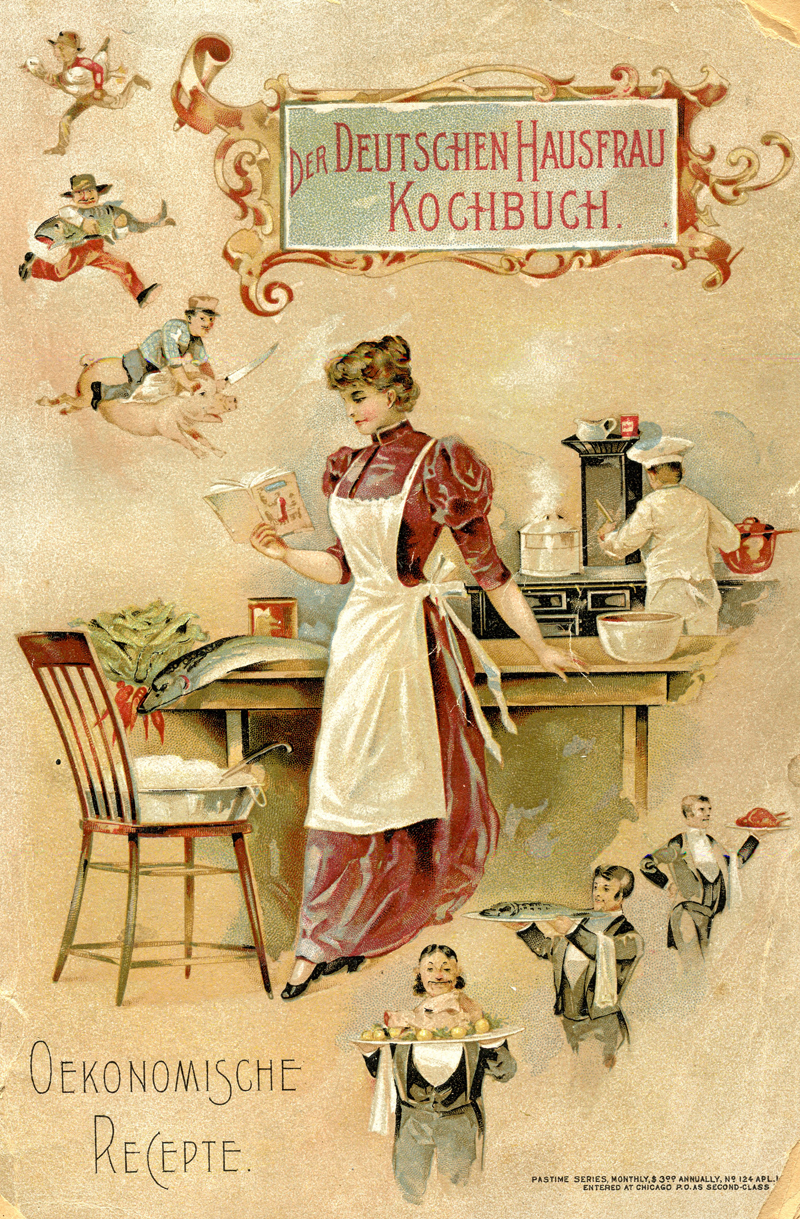
Der deutschen Hausfrau Kochbuch für die allgemeine deutsche und deutsch-amerikanische Küche : enthaltend eine grosse Anzahl ökonomische Recepte. 1894, cover.
For all these of these kinds of materials, the uncertainties they address, the stereotypes they reinforce, fantasies they play to, ideals they uphold, what they depict and what they leave out, open a window into social and moral attitudes and anxieties, popular fears about gender roles, and other contemporary issues.
Unsurprisingly, 19th & early 20th c American culinary materials are heavy on images of clearly Anglo-Saxon American women, and light on images of women of any other heritage. When the materials did show women of any other race or nationality, the women tend to be symbolic or heavily stereotyped.
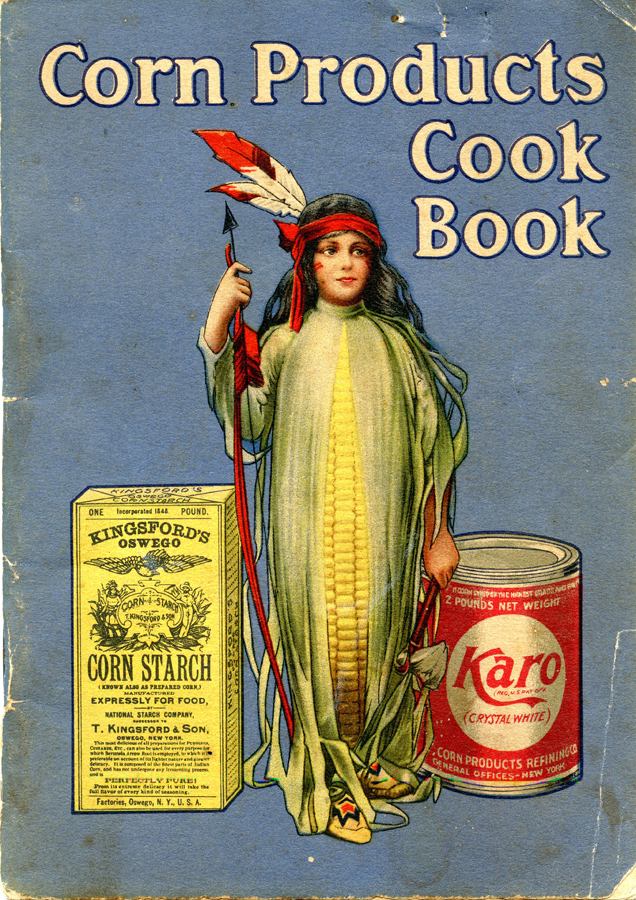
Corn products cook book / by Emma Churchman Hewitt. 1901, cover.
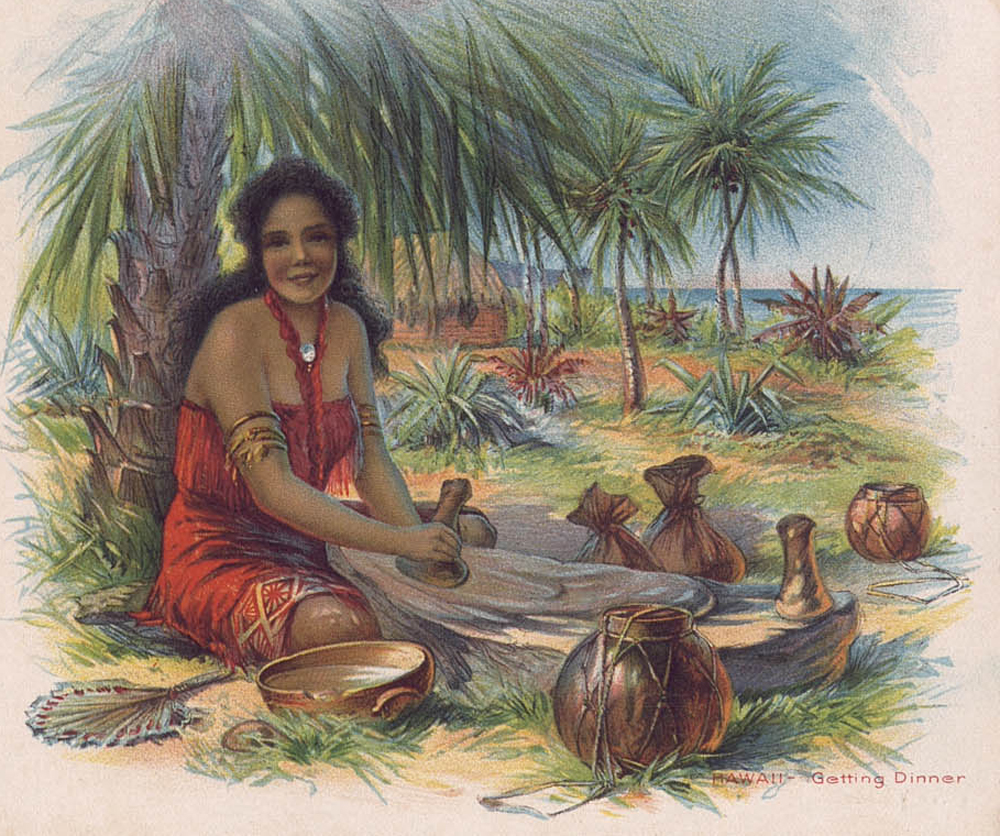
Desserts of the world (1909); p. [11] Click for a larger version of this image
For a few images of African American women in American culinary materials, see last month’s post for African-American History Month
Most common are images of women playing out their societal and familial roles. Images of women cooking, at a stove...
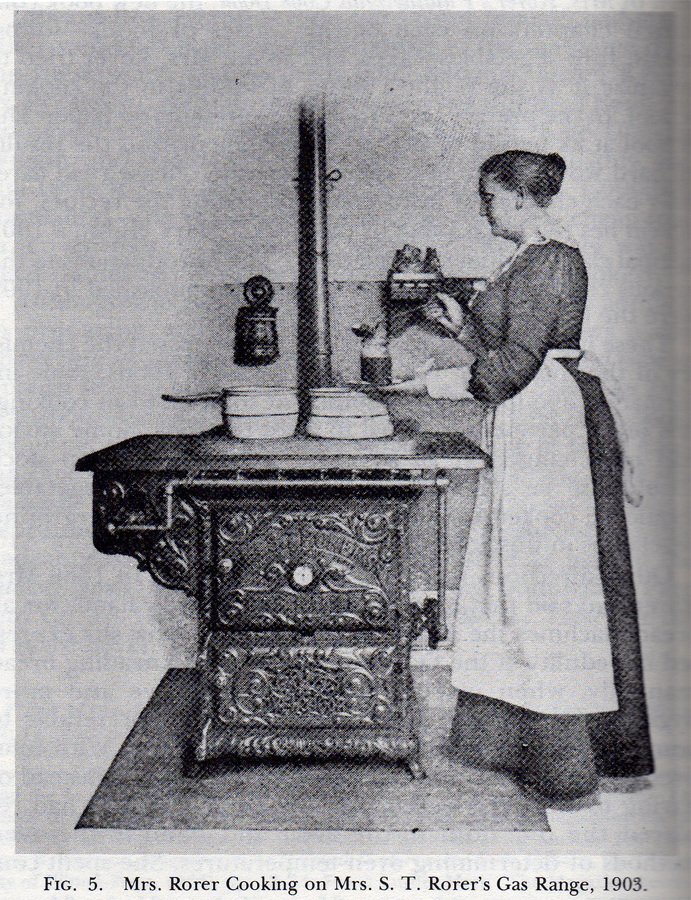
Sarah Tyson Rorer : the nation's instructress in dietetics and cookery / Emma Seifrit Weigley. 1977, p 144
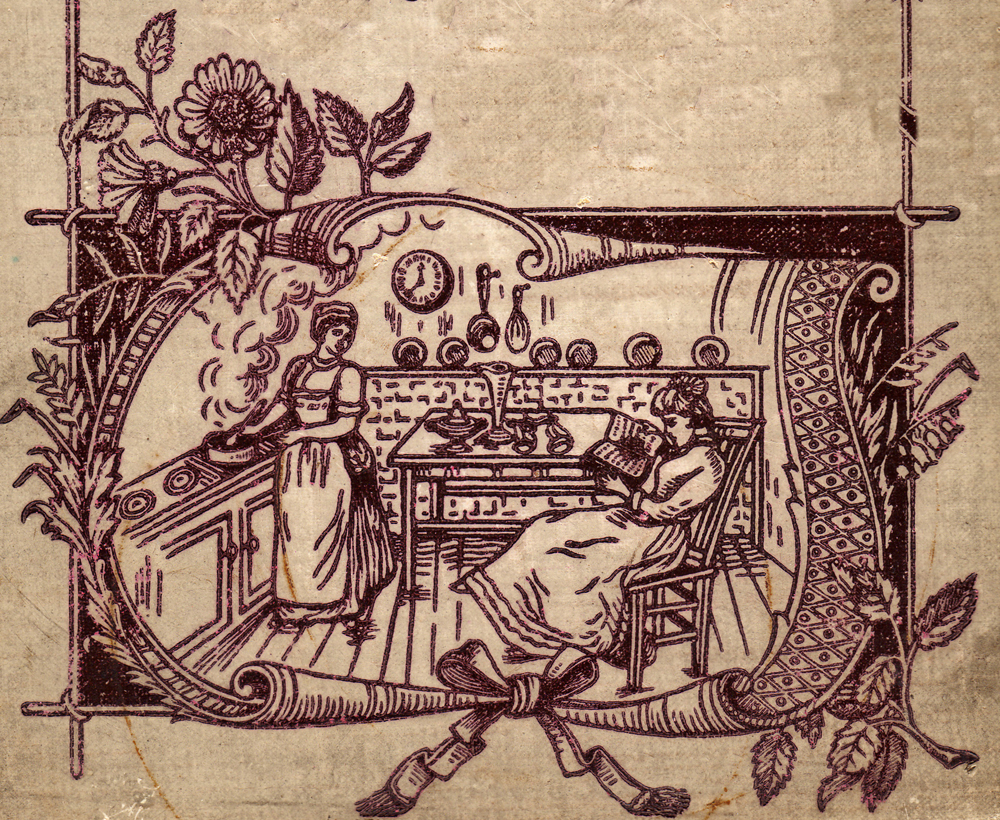
Woman's Exchange Cook Book 1902, detail of cover
...or elsewhere in a kitchen
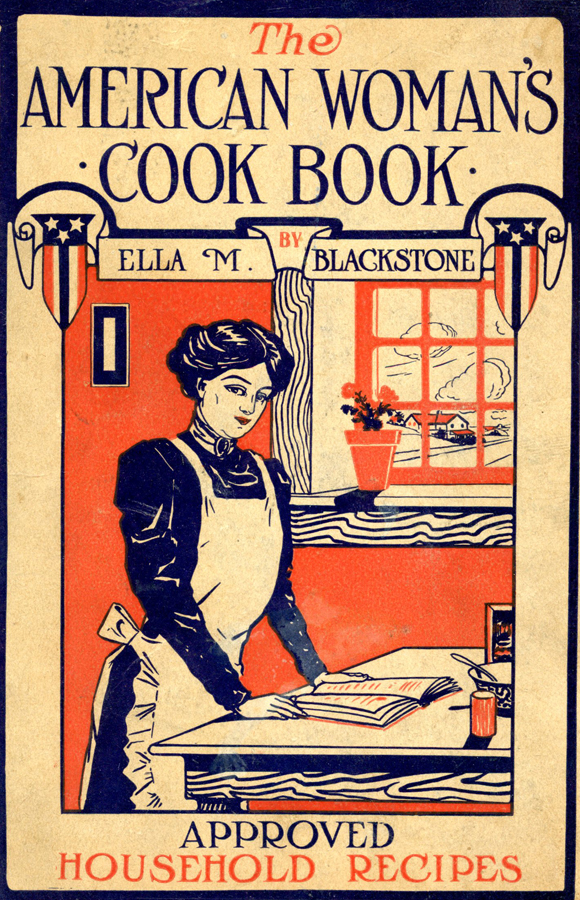
American Woman’s Cook Book 1910, cover
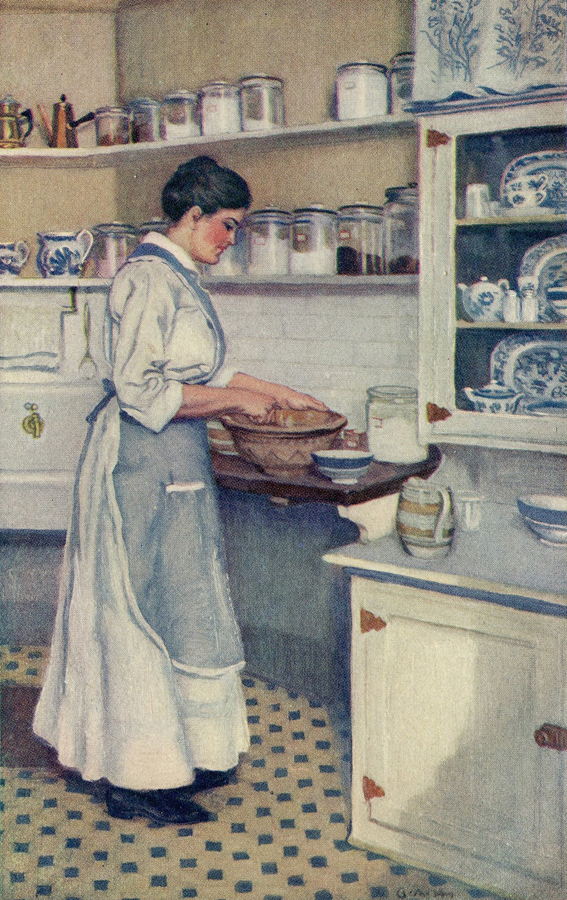
Simple directions for the cook. / By Caroline Reed Wadhams. 1917, frontispiece
Women are often portrayed feeding someone, often a child. For a few images of this see the previous Diverse CIty post on images of children in culinary materials.
But it's not unusual to see images of women presenting food or drink to someone not in the picture...
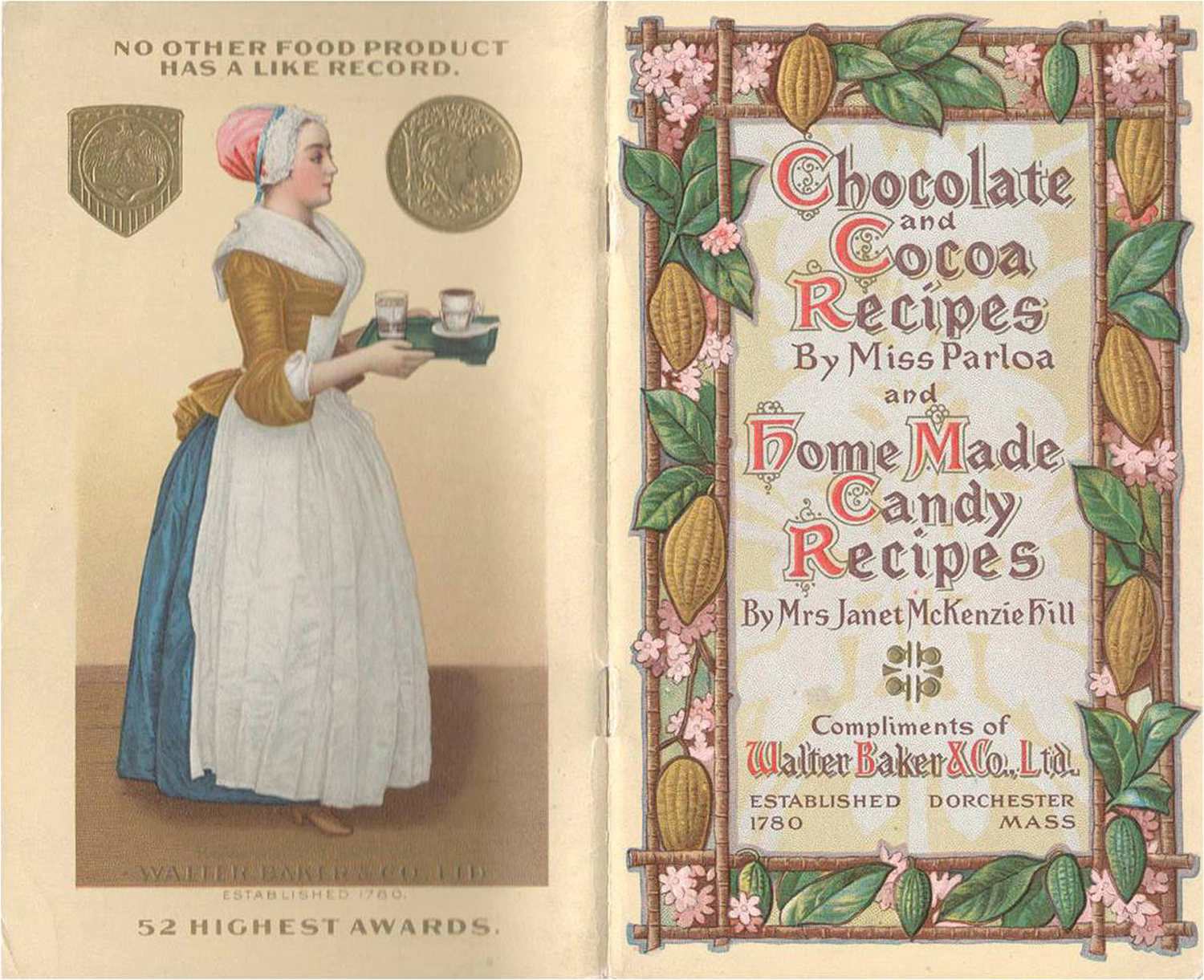
Chocolate and Cocoa Recipes and Home Made Candy Recipes
1910, front and back covers. The cover image is based on Jean-Étienne Liotard's Das Schokoladenmädchen
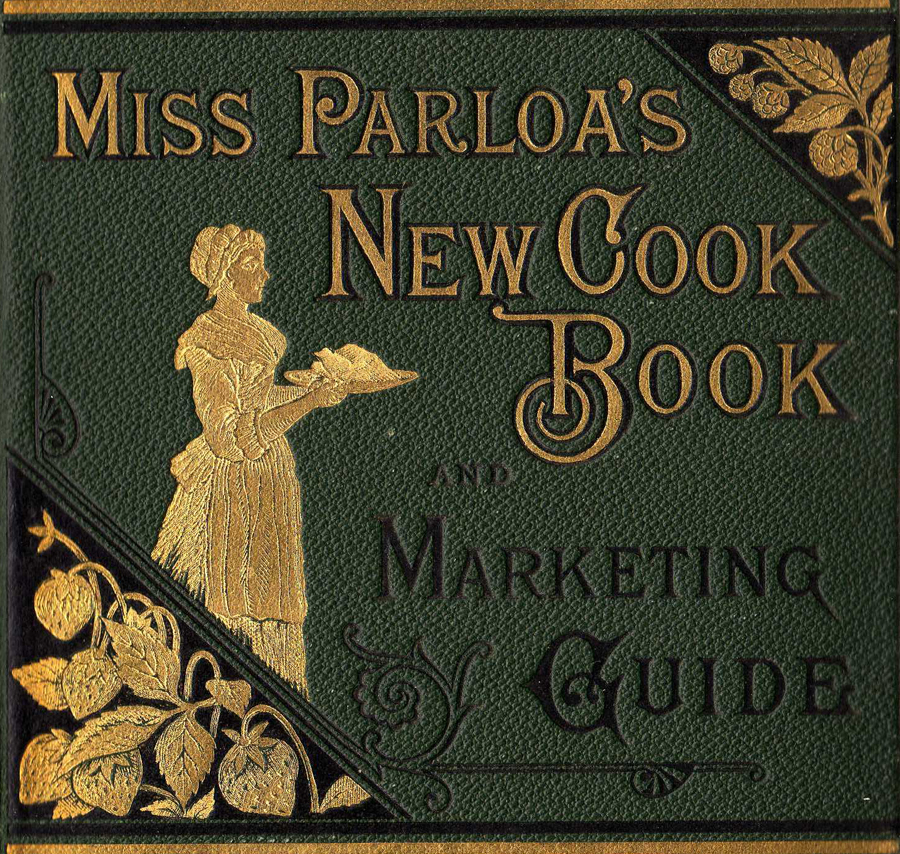
Miss Parloa's new cook book : a guide to marketing and cooking / by Maria Parloa.
1880, detail of cover.
...and often a woman looks straight out of the cover, enticing the viewer with a direct gaze.
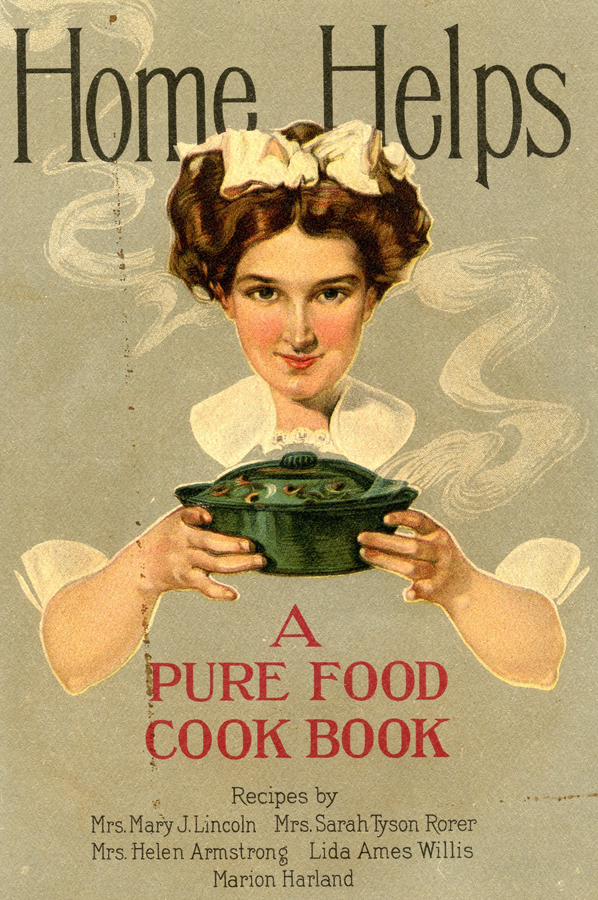
Home helps : a pure food cook book. 1910, cover.
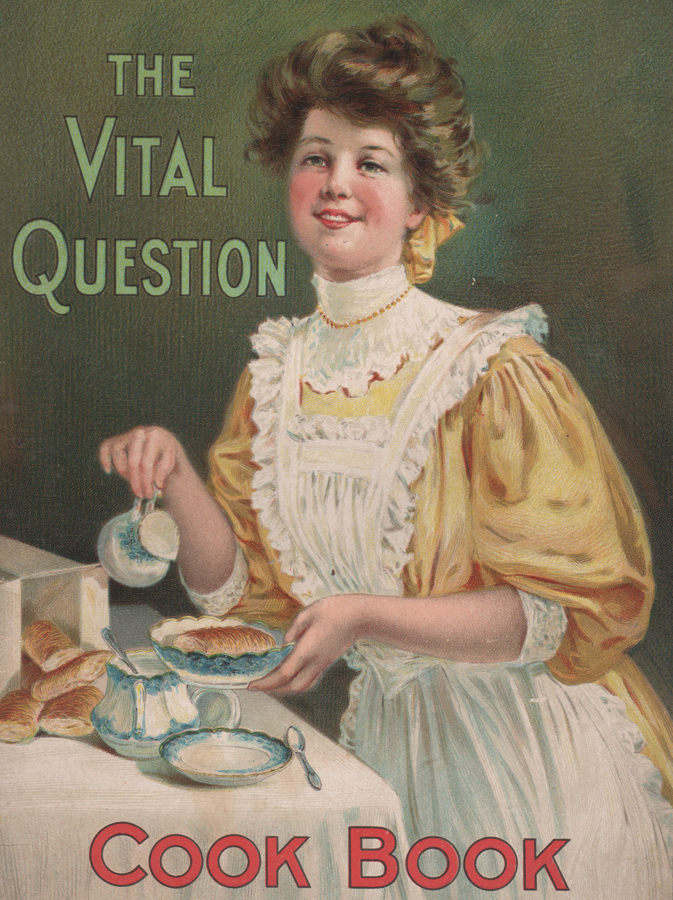
The Vital Question Cook Book, 1908, detail of cover,
As you can see in the images above, culinary materials depicted women of different classes, engaged in status-suitable occupations. Images of class in culinary materials is a complex, multi-threaded story, and will be the subject of a future post.
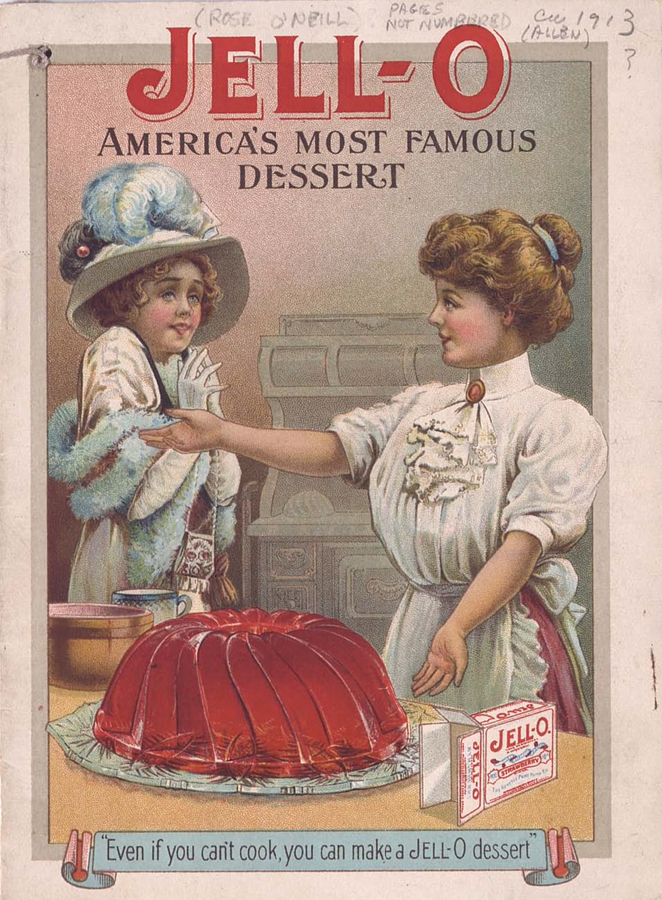
Jell-O, America's most famous dessert, 1913?, cover.
One overall message of these materials seems to be that all women were brought together by their success or failure in their roles, in the household and in society.

Jell-O, America's most famous dessert, 1913?, detail of pp. 2 & 13
A different face of women’s history is found in the succes stories of real women, the culinary experts of their day, who made careers for themselves as teachers, speakers, writers, and editors, some of whose works appear in the images above.

What Six Famous Cooks Say of Jell-O, 1912, details of pp. 1, 3, 5, 10 & 14
Pictured above are
- Marion Harland, (pseudonym of Mary Virginia Terhune) 1830-1922.
- Sarah Tyson Heston Rorer, 1849-1937
- Mary J. Lincoln (AKA Mrs. D.A. Lincoln)1844-1921.
- Janet McKenzie Hill 1852-1933
- Christine Terhune Herrick, 1859-1944.